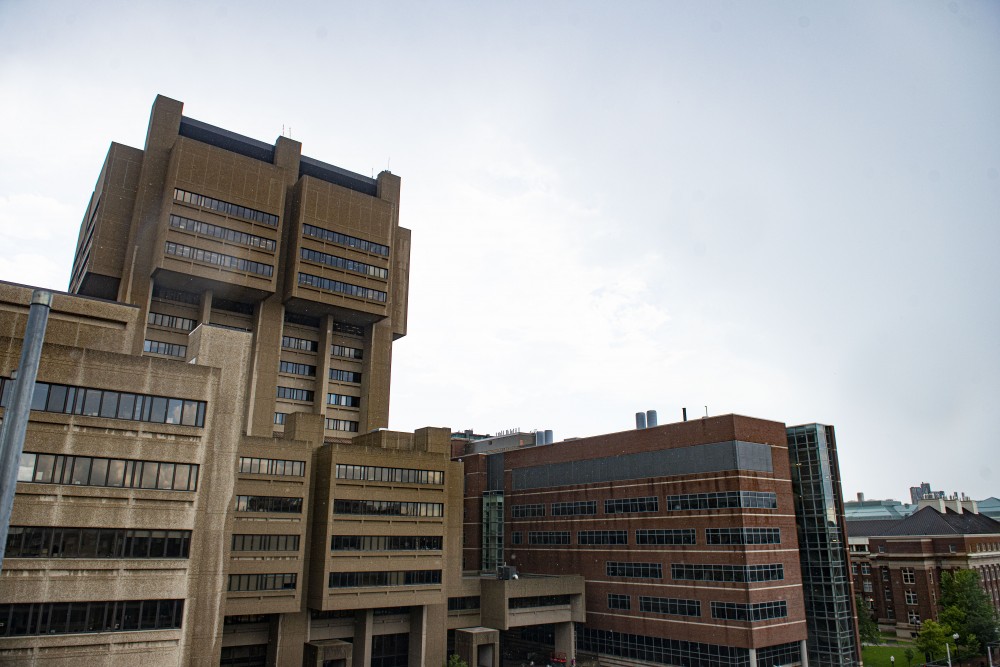The University of Minnesota is not the only public higher education institution in the state casting a worried glance at the stateâÄôs economic future. Spread across 32 schools, with enrollment numbers ranging from more than 300 to almost 17,000, the schools that make up the Minnesota State Colleges and Universities (MnSCU) system face the same challenges as those of the University âÄî and are using some similar solutions. Gov. Tim Pawlenty has recommended a $146 million cut to MnSCU âÄôs budget over the next two years, a 10.7 percent difference. At a Feb. 5 Senate Higher Education Policy and Finance Division hearing, MnSCUâÄôs Chief Financial Officer Laura King presented a doomsday scenario of the effects such a cut could have on the system: -If the cut was made up in only tuition revenue, tuition would increase 11 percent. -If the cut was made up in only staff reductions, more than 1,000 people would lose their jobs. -If MnSCU wanted to compensate for the cut by closing schools, one large university and one two-year college would have to be shut down âÄî or 10 of the smaller schools would have to go. âÄúI hope that one of your other strategies for cutting costs is not campus closings,âÄù Sen. David Tomassoni, DFL-Chisholm, said Feb. 5. âÄúI believe the campuses are strategically located across the state and one of the things it allows for is access.âÄù MnSCUâÄôs Board of Trustees, its Governor-appointed administrative body, would consider everything, even campus closings, to combat the rough economy, Chancellor Jim McCormick told the committee. âÄúWeâÄôll be trying not to do that,âÄù he said. âÄúThe boardâÄôs taken the position at this point that, as we work through this, everything is on the table.âÄù The notion of campus closings have some MnSCU leaders reeling. âÄúOur mission is access and opportunity for all and if you cut 10 campuses, you deny the mission of the system,âÄù said Nancy Mach, dean of student affairs at Pine Technical College âÄî a small University in Pine City, Minn. While campus closings are a last resort, most everything else is on the table as well, King said. âÄúWith a [10.7] percent cut, you will see access and opportunity curtailed,âÄù she said on Feb. 5. âÄúWe will be looking at layoffs, program closures, enrollment caps, reducing course offerings and other strategies.âÄù MnSCU has already taken measures to help ease the effects of the brittle economy. The system has implemented a hiring pause, akin to those undertaken by the University, cut in travel expenses, delayed purchases and closed class sections and capped enrollment, MnSCU representatives said. The University, meanwhile, has instituted a hiring pause across campus, as well as a freeze on administrative salaries. At the Board of Regents meeting Friday, University President Bob Bruininks said all units of the school will be asked to make cuts of 5 percent to 8 percent in their budgets. Bruininks has pledged to keep tuition increases less than 10 percent. âÄúWe never know what the governor is going to propose,âÄù Vice Chancellor for Public Affairs Linda Kohl said, noting a final strategy for the system wouldnâÄôt be determined until the Legislature makes its final appropriations. âÄúWe knew that the state had a fairly large budget deficit so we knew there was going to be some cuts proposed,âÄù she said. Those cuts hurt different campuses in different ways. At Pine Technical, with a budget of more than $13 million and roughly 85 employees , Mach said students will likely feel the effects worse than at larger schools in the system. But Steve Ludwig , administrative vice president at the nearly 17,000-student St. Cloud State University, said the response to possible cuts has been similar at all schools âÄî enhance revenue and reduce costs. âÄúI think thereâÄôs more in common among our approaches at this point,âÄù he said. Tuition MnSCUâÄôs tuition varies from school to school. For the 2009 fiscal year, however, the system average was $4,360 per student, an increase of 72 percent compared to 2002 numbers. When MnSCU has taken cuts from the state in the past, that number tends to rise. More than $200 million in cuts in state aid between 2002 and 2003 resulted in four straight years of double-digit tuition hikes. Between 2001 and 2005, the University saw tuition balloon at a rate of more than 13 percent each year. King promised, however, a different approach from the system this time around. âÄúOur Board is not interested in going back to tuition like we did five years ago,âÄù she said. âÄúYou wonâÄôt see that kind of solution from us this year.âÄù Student organizations led the charge against high tuition in 2006, Kelly Asche , interim executive director of the Minnesota State University Student Association , said. Now, facing down a second cut of more than $100 million in a span of five years, Asche said the goal is to keep tuition low, while at the same time being flexible in solving the systemâÄôs budgetary problems. âÄúNow we find ourselves in the position where everybody wants to have a tuition cap and weâÄôre like, âÄòno, no wait,âÄôâÄù he said. âÄúWe want that during a surplus but when itâÄôs a deficit, we want the flexibility.âÄù Staff In 2003, Kohl said, tuition resulted in about $170 million in revenue for the system. But since the system faced about $70 million in added costs, jobs needed to be cut from the system as well. On Friday, MnSCU announced a tentative agreement with its faculty union in which faculty would receive no across-the-board increases or annual step increases in their salary. Staff reductions are still an option, and smaller schools are set to be hurt, Asche said. As employees lose their jobs, students also lose out, he said. Course sections will be lost, class sizes could increase or entire programs could be eliminated, he said. Likewise, as adviser jobs are cut, professors will need to take on a higher advising burden, and Asche said he worries this will lead to poorer advising quality, which could, in turn, cause everything from increased student debt to a lower graduation rate. Mach said she worries this effect will be compounded at smaller schools such as Pine Technical, which has already absorbed $85,000 in cuts. âÄúAll staff wears so many hats,âÄù Mach said, âÄúthat if we have to cut a position, we have to cut more than one service.âÄù âÄîDevin Henry is a senior staff reporter.

















